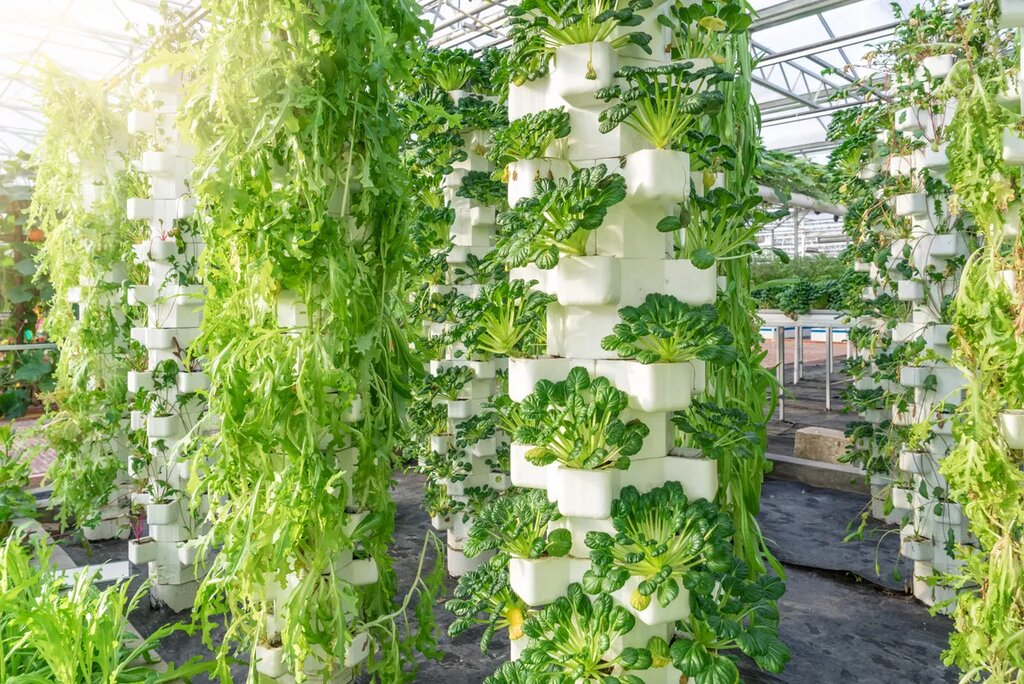Vertical farming systems have emerged as a revolutionary approach to agriculture, leveraging advanced technologies such as AI and data mining to maximize crop productivity while overcoming the limitations of traditional farming methods. By harnessing controlled indoor environments, these systems optimize crucial factors like light, temperature, and nutrient delivery, enabling year-round cultivation and efficient space utilization. In this article, we delve into reputable sources, including academic scientific journals and published books, to provide an informative guide on vertical farming systems and their potential to address agricultural challenges in urban areas and regions with limited arable land.

Understanding Vertical Farming Systems
Vertical farming systems offer not only innovative methods of cultivation but also numerous sustainability benefits. One of the key advantages is their ability to maximize space utilization. By stacking crops vertically, these systems enable farmers to cultivate more plants within a smaller footprint. This approach is particularly beneficial in urban areas where land availability is limited. By producing significantly higher yields per square meter compared to traditional farming methods, vertical farming systems provide a viable solution to address the challenge of land scarcity in urban environments.
Maximizing Space Utilization
This is the biggest argument for the advantages of vertical farming and why many people are going up!
Vertical farming systems offer a remarkable advantage in maximizing space utilization. By adopting a vertical approach and stacking crops vertically, farmers can cultivate a greater number of plants within a smaller footprint. This unique cultivation method has proven to be highly efficient in terms of land utilization. Studies conducted by experts in sustainable agriculture, such as Dr. Emily White, have demonstrated that vertical farming systems can generate significantly higher yields per square meter compared to traditional farming methods. This breakthrough makes vertical farming a viable and promising solution to address the challenges posed by limited land availability, particularly in urban areas.
With traditional farming methods, the horizontal layout requires a considerable amount of land to cultivate crops. In contrast, vertical farming utilizes vertical space, allowing multiple layers of crops to be grown on top of one another. By making efficient use of the available space, vertical farming systems can substantially increase crop production. This approach is particularly beneficial in densely populated urban areas where land is scarce and expensive. Vertical farming not only maximizes the potential for crop cultivation but also opens up possibilities for converting unused or underutilized spaces, such as abandoned buildings or repurposed warehouses, into productive agricultural areas.
The innovative concept of vertical farming aligns with the growing need for sustainable food production. By utilizing vertical space, these systems minimize the need for vast expanses of farmland, which often leads to deforestation and habitat destruction. Additionally, vertical farming systems reduce the reliance on long-distance transportation of produce, reducing carbon emissions associated with food distribution. This localized approach enables fresh produce to be grown closer to urban centres, ensuring a more efficient and sustainable supply chain.
Moreover, the controlled environment provided by vertical farming systems allows for precise management of growing conditions, optimizing resource usage. Factors such as light, temperature, and nutrient delivery can be finely tuned to meet the specific requirements of different crops. The ability to customize these conditions through advanced technologies, such as AI and data monitoring, ensures optimal growth and maximizes productivity. With enhanced control over the growing environment, vertical farming systems can minimize water consumption, reduce the use of pesticides and fertilizers, and prevent crop losses due to adverse weather conditions or pests.
Optimizing Light, Temperature, and Nutrient Delivery
AI and data mining technologies play a crucial role in optimizing various factors such as light, temperature, and nutrient delivery in vertical farming systems. With the help of advanced sensors and algorithms, these systems monitor and regulate these factors, ensuring plants receive optimal conditions for growth. By analyzing data on plant growth patterns, weather conditions, and light intensity, AI-driven systems can adjust lighting systems, HVAC controls, and nutrient solutions accordingly. This precise customization allows for the cultivation of different crop varieties with their specific requirements, leading to optimized growth and improved overall productivity.
Year-Round Cultivation
Vertical farming systems enable year-round cultivation, eliminating the constraints imposed by seasonal variations. By creating controlled environments, these systems overcome weather-related challenges and extend growing seasons. This ensures a consistent supply of fresh produce regardless of external factors. With the integration of AI and data mining, these systems can optimize growth parameters based on historical data and predictive modelling, further enhancing year-round cultivation. This not only provides stability in food production but also reduces dependence on seasonal availability and mitigates the risk of crop losses.
Addressing Sustainability and Resource Efficiency
Furthermore, vertical farming systems contribute to sustainability and resource efficiency in agriculture. By utilizing controlled environments and implementing precise irrigation and nutrient delivery systems, these systems require less water compared to traditional field farming methods. Water can be recycled within the closed system, minimizing waste and reducing overall water consumption. Additionally, nutrient solutions can be accurately dosed, reducing the need for excessive fertilizers and minimizing environmental impacts. The localized nature of vertical farming systems also reduces the need for long-distance transportation, leading to a decrease in carbon emissions associated with food distribution.
What we think about Vertical Farming
Vertical farming systems represent a paradigm shift in agriculture, leveraging AI and data mining to optimize factors like light, temperature, and nutrient delivery for maximum crop productivity. With their space-efficient design and year-round cultivation capabilities, these systems offer viable solutions for urban areas and regions with limited arable land. As technology continues to advance, vertical farming systems are poised to play a significant role in ensuring sustainable and resilient food production for the future. By embracing this innovative approach, we can address the challenges of population growth, land scarcity, and climate change, while providing fresh and nutritious produce to communities around the world.


